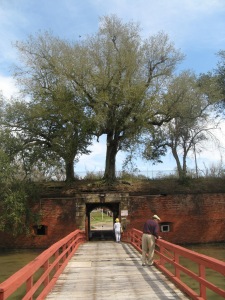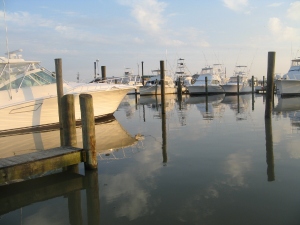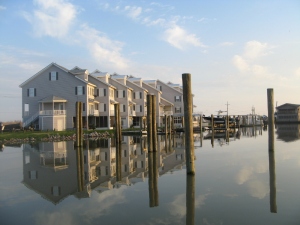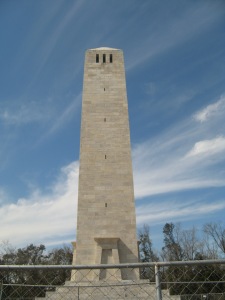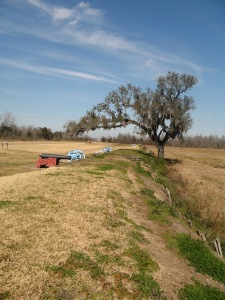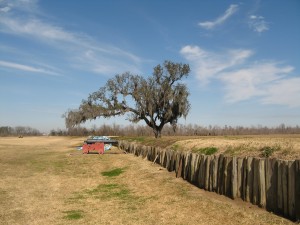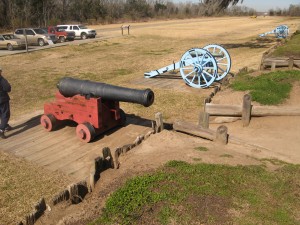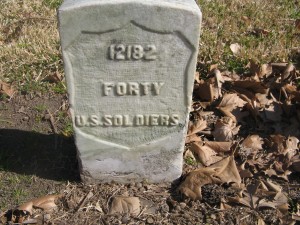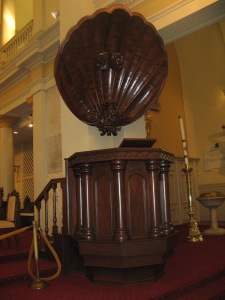Late yesterday, Jim got a mysterious text message on his phone, "Be at Pouloskis at 1700." He left a return text, "Where is Pouloskis? " We asked everyone we ran into if they knew where Pouloskis was? No one we talked to in Cypress Cove had a clue where or what Pouloskis was. Terri, the office attendant at Cypress Cove even looked up boat names that register into the area. Nothing. We were at a loss and hadn't found a ride. A visit to Pilot Town was looking pretty dim for Tuesday. Its the off season for fishing and many boaters have alternative season jobs.
We called several local marinas and got names. We called numbers plastered on the sides of boats passing by. Tuesday dawned cold, gray and windy. At 11:00 a.m. Chris Calloway called us and offered to take us to Pilot Town on an open boat. We debated briefly since neither of us brought winter clothing. "Bundle up, you are gonna be cold," he told us. When would we have another opportunity to visit this unusual place?

Chris knows how to dress for an open boat. He promised we wouldn't get wet. We managed to avoid frostbite on the 20 minute drive over. A slew of cliche's come to mind, like "colder than a well digger's ass in the Klondike."
When Chris pulled up into Pilot Town, a pilot boat was backing up to the dock. The skipper was a retired 25 year employee of Texaco, now working as an engineer on the pilot boats. Hewett Peles informed us what everyone else had already told us, and what we had read, "There is nothing here to see!"


Yeah, we know. We aren't normal tourists. We don't only flock to tourist sights. He told us the pilots used to work several branches of the river, they were called the Branch Pilots. "Now, the branches are all full of sand. They have dredges taking the stuff out, but they'll be at it forever. Only one branch near the gulf is navigable now," he told us. We asked which direction to the post office. "It was only a trailer on piers. It was one of the first buildings to go in Katrina," he said. The building below is floating on a barge and is in good shape.

The Pilot's barracks was in good shape. At first we thought the sign was a joke since this is a very quiet community, but people come here to hunt and guns are noisy.


This building right next to the barracks was clearly damaged during Katrina, but others were far worse. Below you see the piers for the boardwalk and house, all that is left of this residence.

Air conditioners, stoves, refrigerators and washing machines lay rusting about where they once graced peoples houses. We saw a door with the knob still on it floating in the water and the pink bathtub below overgrown with weeds.

We walked the cement "boardwalk" , built in 1993, in both directions as far as it would go. We saw about 5 intact buildings and many crushed beyond repair, sunken into the swamp or gone altogether.

Chris then took us around the North side of the Island to see the camps which suffered little damage. Small cabins on stilts. He had never visited or navigated around Pilot Town and he showed us the depth gauge reading 23 1/2 feet change within 100 yards to 2 feet. Nature reasserting itself, trying to rebuild the island in its own way. We saw egrets that looked like flamingos because they had eaten enough shrimp to turn temporarily pink; raccoons, ibis', and many other birds. It is/was a unique community in that all houses there are built on stilts or float.
It wasn't our intention to go to Pilot Town to document Katrina damage, but to wander as far south in Louisiana as we could go, just for the heck of it. We did it! We decided to celebrate our adventure.

When we returned home, Jim claimed his fingers were still cold enough to chill the champagne. (Whatta ham!) As for Pouloskis? He never returned our message. There is a military installment nearby, military time-1700? We decided it was just a wrong number.



























